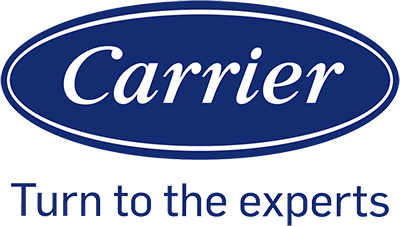Clean ductwork plays a bigger role in HVAC performance than many of us realize. Dust, debris, and buildup inside the ducts force the system to work harder, which uses more energy and shortens its lifespan. Regular duct cleaning helps the system run more efficiently and keeps energy costs under control.
When we keep our ducts clear, air flows smoothly through the system. That means the HVAC unit doesn’t strain to heat or cool the space, and indoor air quality improves at the same time. This simple step supports both comfort and efficiency.
We’ll look at how duct cleaning directly affects HVAC performance, the key benefits it brings, and the best ways to maintain efficient ductwork. We’ll also cover other strategies that work alongside duct cleaning to keep our systems running at their best.
How Duct Cleaning Enhances HVAC Efficiency

Clean ductwork helps our HVAC system run with less strain, lowers wasted energy, and reduces the chance of costly problems. By keeping airflow clear, we improve circulation, cut down on leaks, and avoid blockages that can push energy bills higher.
Impact of Clean Ducts on Airflow
When dust and debris collect inside ducts, airflow slows down. Our HVAC system has to push harder to move air through narrow or blocked passages. This extra effort reduces efficiency and can shorten the life of the equipment.
By cleaning ducts, we remove buildup that interferes with even air distribution. Consistent airflow allows each room to reach the set temperature faster and stay comfortable longer.
Key benefits of improved airflow include:
- Less strain on fans and motors
- More even heating and cooling
- Reduced need for frequent system adjustments
We also avoid hot and cold spots that often occur when air cannot circulate freely. Clean ducts keep the system balanced and help us maintain steady comfort without overworking the unit.
Reducing Energy Bills Through Improved Air Circulation
Poor circulation forces our HVAC system to run longer cycles. This increases energy use and raises monthly bills. Clean ducts allow air to move smoothly, so the system can reach the target temperature in less time.
When ducts are clear, energy efficiency improves. Shorter run times mean we spend less on electricity or fuel while still keeping the home comfortable. Over time, these savings add up and help offset the cost of regular duct cleaning.
| Condition of Ducts | System Run Time | Energy Use | Cost Impact |
|---|---|---|---|
| Dirty/Clogged | Longer cycles | Higher | Increased bills |
| Clean | Shorter cycles | Lower | Reduced bills |
By maintaining clean ductwork, we keep energy bills predictable and avoid unnecessary waste.
Preventing Blockages and Air Leaks
Blockages often come from dust, pet hair, or other debris that builds up over time. These obstructions reduce airflow and can cause uneven temperatures across rooms. In some cases, blockages may even lead to overheating in the system.
Leaks are another issue. Small gaps or cracks in ductwork let conditioned air escape before it reaches the vents. This wastes energy and forces the HVAC system to run longer to make up for the loss.
Regular duct cleaning helps us spot these problems early. We can remove buildup before it causes blockages and identify areas where air is leaking. Sealing leaks and clearing obstructions ensures the system works at its best without unnecessary energy loss.
By keeping ducts clean and sealed, we protect both system performance and household comfort.
Key Benefits of Regular Duct Cleaning

By keeping our air ducts clean, we help lower the amount of particles in the air, reduce strain on equipment, and avoid buildup that can lead to damage. Clean ducts also support healthier breathing conditions and keep the ventilation system running more efficiently.
Improving Indoor Air Quality and Reducing Allergies
When dust, pollen, and other contaminants build up inside air ducts, they circulate through the ventilation system every time we run the HVAC. This lowers indoor air quality and can make allergy symptoms worse for people sensitive to airborne particles.
Regular duct cleaning helps remove these irritants before they spread. By reducing allergens like pet dander and mold spores, we create a cleaner breathing environment. This is especially important for households with children, older adults, or anyone with asthma.
Cleaner ducts also help reduce odors caused by trapped dust and debris. Instead of air carrying musty smells, the system delivers fresher airflow throughout the home.
Minimizing Dust, Debris, and Contaminants
Dust and debris naturally collect inside air ducts over time. Without proper cleaning, this buildup can restrict airflow and make the HVAC system work harder. The more strain placed on the system, the less efficient it becomes.
By removing excess particles, we keep air moving freely through vents. This not only improves comfort but also reduces the chance of contaminants being pushed back into living spaces.
Below are common materials removed during duct cleaning:
- Dust and dirt from daily household activity
- Construction debris left behind after renovations
- Mold growth in damp or humid areas of the system
- Pet hair and dander that settle in duct surfaces
Keeping these materials out of circulation supports both system efficiency and cleaner indoor air.
Extending HVAC System Lifespan
When ducts stay clogged with dirt and debris, the HVAC system must run longer cycles to maintain the set temperature. This extra workload leads to more wear on parts like motors, fans, and filters. Over time, the strain shortens the system’s lifespan.
Regular duct cleaning helps reduce this stress. With clear pathways, the system can move air more efficiently, lowering the risk of overheating or breakdowns.
We also spend less on repairs when we prevent damage caused by restricted airflow. Combined with routine HVAC maintenance, duct cleaning plays a direct role in protecting the long-term performance of the entire ventilation system.
Best Practices for Maintaining Efficient Ductwork
We can keep our HVAC systems efficient by focusing on airflow, sealing leaks, and knowing when to handle tasks ourselves or call a professional. Paying attention to these details helps us maintain cleaner ducts, reduce wasted energy, and extend the life of our equipment.
Regular Filter Changes and Register Maintenance
Air filters trap dust, pollen, and other particles before they enter the ducts. When filters clog, airflow drops, and the system works harder to push air through. We should replace filters every 1–3 months, depending on usage and filter type.
Registers also need attention. Supply registers can collect dust and block airflow if not cleaned. Vacuuming and wiping them down prevents buildup and improves indoor air quality.
It also helps to check that registers are not blocked by furniture, rugs, or curtains. Clear airflow paths keep rooms evenly conditioned and reduce strain on the blower motor.
A simple maintenance schedule might look like this:
| Task | Frequency |
|---|---|
| Replace filters | Every 1–3 months |
| Clean registers | Every 2–3 months |
| Check airflow blockages | Monthly |
Sealing and Insulating Ducts
Leaks in ductwork waste energy by letting conditioned air escape into attics, crawl spaces, or walls. We can seal small gaps with mastic sealant or foil-backed tape. Standard cloth duct tape should be avoided because it wears out quickly.
Insulating ducts in unconditioned spaces helps reduce heat loss in winter and heat gain in summer. Materials like fiberglass wrap or rigid foam boards are commonly used.
We should also inspect joints and connections where leaks often occur. Even small cracks can lead to higher utility costs and uneven heating or cooling.
By sealing and insulating, we improve ventilation efficiency and reduce the workload on the HVAC system. This step can make a noticeable difference in comfort and energy use.
Professional vs. DIY Duct Cleaning
Some duct cleaning tasks are safe for us to handle, like removing and washing vent covers or vacuuming near registers. These steps reduce surface dust but do not reach deep inside the ductwork.
Professional duct cleaning uses specialized tools to remove debris, mold, or heavy buildup. Trained technicians can also inspect for damage that affects efficiency.
We should consider professional air duct cleaning if we notice visible mold, pest infestations, or large amounts of dust blowing from supply registers. In these cases, DIY methods are not enough.
Routine DIY care helps with surface cleanliness, but scheduling professional duct cleaning every few years ensures the system stays clear and balanced. This combination supports long-term HVAC maintenance and cleaner indoor air.
Additional Strategies to Maximize HVAC Performance
We can make our HVAC system work more efficiently by using smart controls, keeping air vents clear, and making sure the system is inspected on a regular schedule. These steps help us reduce wasted energy, improve airflow, and extend the life of our equipment.
Incorporating Smart Thermostats
A smart thermostat gives us more control over heating and air conditioning. We can set schedules that match when we are home or away, which prevents the system from running when it is not needed. Many models also adjust automatically based on outside weather or our habits.
Remote access is another important feature. We can use a phone app to change the temperature before arriving home, which saves energy without sacrificing comfort. Some devices even provide reports that show how much energy we use and suggest ways to cut back.
When choosing a smart thermostat, we should check compatibility with our HVAC system. Not all models work with older equipment.
Key benefits include:
- Lower energy costs through scheduling
- More consistent indoor temperatures
- Easy adjustments from anywhere
Monitoring and Addressing Air Vents
Air vents play a direct role in how well our HVAC system moves air. If vents are blocked by furniture, rugs, or dust buildup, airflow drops and the system works harder. This can lead to uneven temperatures and higher energy use.
We should keep vents open and clear in every room. Closing too many vents can cause pressure problems that strain the air conditioning unit or furnace. Regular vacuuming around vent covers also reduces dust that could enter the ductwork.
A simple checklist helps us stay on track:
- Check vents monthly for blockages.
- Vacuum vent covers to remove dust.
- Keep furniture at least a few inches away.
By paying attention to vents, we improve comfort and reduce unnecessary wear on the HVAC system.
Scheduling Routine System Inspections
Routine inspections from a licensed technician help us find small issues before they become costly repairs. During a checkup, the technician looks at parts like coils, filters, refrigerant levels, and electrical connections.
These visits also confirm that the air conditioning and heating units run safely and at peak efficiency. A clogged coil or low refrigerant can cause the system to use more energy and cool less effectively.
We should aim for at least one inspection before summer and one before winter. This timing ensures the system is ready for heavy use. Technicians may also recommend filter changes or duct cleaning if they see airflow problems.
Regular inspections keep the HVAC system reliable and extend its service life, saving us money in the long run.




